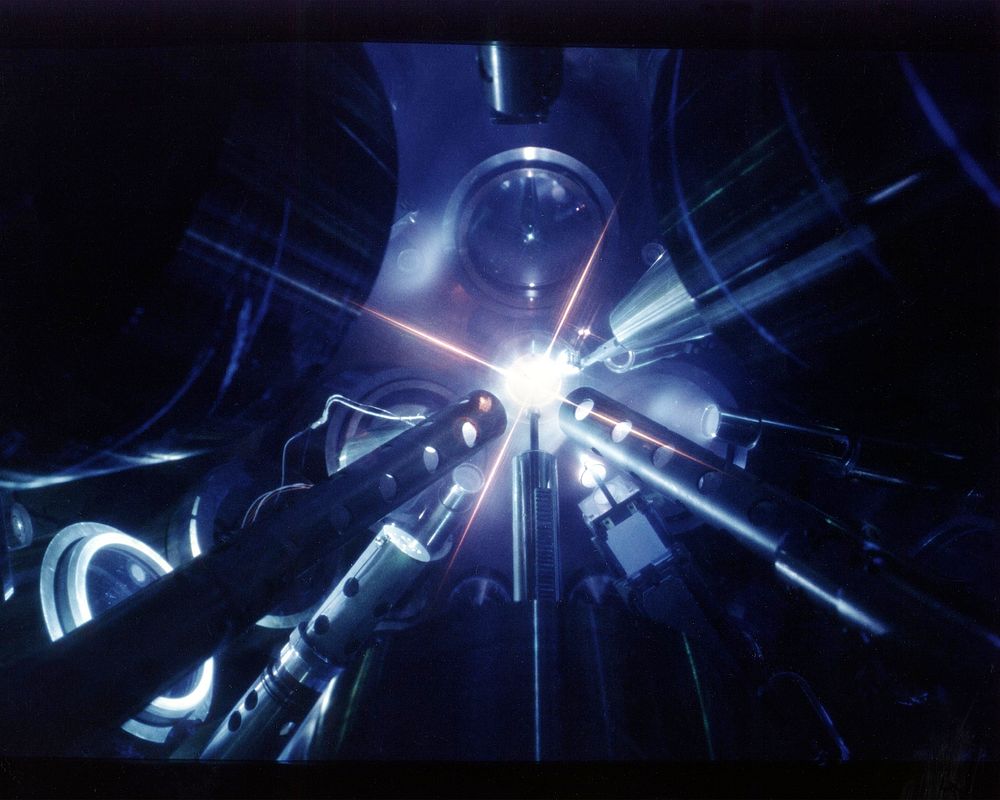
View inside the omega target chamber at the moment of system operation.
The 24-beam, 12-terawatt omega laser was originally designed to produce powerful infrared laser beams. experiments later showed that ultraviolet light would be more effective in producing fusion reactions, so researchers developed a way to convert the laser light produced by omega from infrared to ultraviolet using potassium dihydrogen phosphate (kdp) crystals. the omega laser originally operated at a wave-length of 1,054 nanometers (nm), conversion to 351-nm operation was completed in 1985. In the laser fusion process, a high-power pulsed laser system is used to compress and heat a minute fuel pellet containing deuterium-tritium, a form of hydrogen gas, causing the hydrogen nuclei to fuse and to release energy. The short-term objective of the lle program is to demonstrate the omega system's drive uniformity and to compress targets to densities greater than 20 grams per cubic centimeter by mid-1987, the ultimate goal is to demonstrate inertial fusion's feasibility as an energy source.
Original public domain image from Flickr